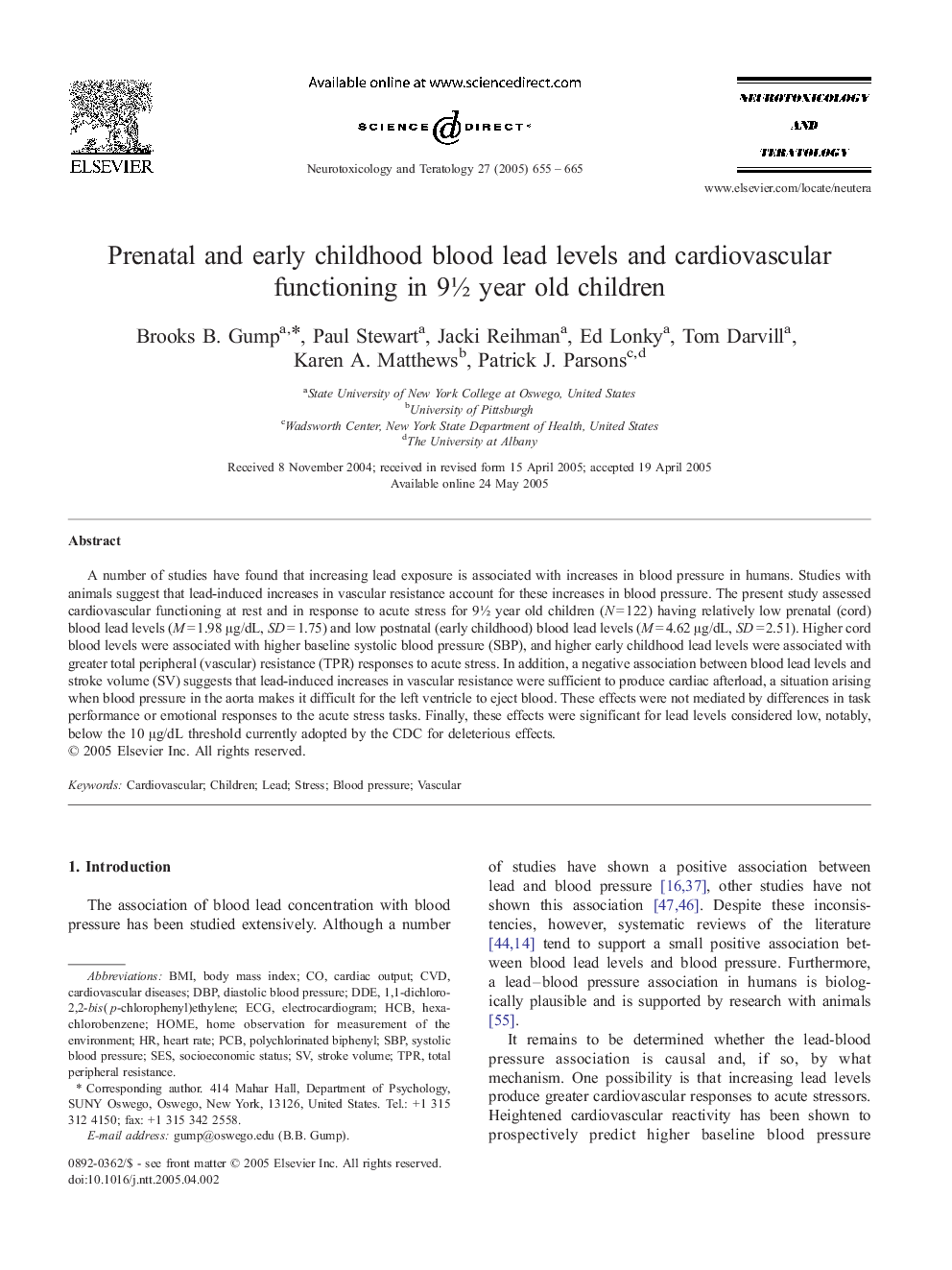| Article ID | Journal | Published Year | Pages | File Type |
|---|---|---|---|---|
| 9033253 | Neurotoxicology and Teratology | 2005 | 11 Pages |
Abstract
A number of studies have found that increasing lead exposure is associated with increases in blood pressure in humans. Studies with animals suggest that lead-induced increases in vascular resistance account for these increases in blood pressure. The present study assessed cardiovascular functioning at rest and in response to acute stress for 9½ year old children (N = 122) having relatively low prenatal (cord) blood lead levels (M = 1.98 μg/dL, SD = 1.75) and low postnatal (early childhood) blood lead levels (M = 4.62 μg/dL, SD = 2.51). Higher cord blood levels were associated with higher baseline systolic blood pressure (SBP), and higher early childhood lead levels were associated with greater total peripheral (vascular) resistance (TPR) responses to acute stress. In addition, a negative association between blood lead levels and stroke volume (SV) suggests that lead-induced increases in vascular resistance were sufficient to produce cardiac afterload, a situation arising when blood pressure in the aorta makes it difficult for the left ventricle to eject blood. These effects were not mediated by differences in task performance or emotional responses to the acute stress tasks. Finally, these effects were significant for lead levels considered low, notably, below the 10 μg/dL threshold currently adopted by the CDC for deleterious effects.
Keywords
HCB1,1-dichloro-2,2-bis(p-chlorophenyl)ethyleneDBPPCBDDESBPSESStressECGelectrocardiogramCardiac outputHexachlorobenzenePolychlorinated biphenylCardiovascular diseasesstroke volumeHomeCVDTPRLeadbody mass indexBMIHeart ratevasculardiastolic blood pressuresystolic blood pressureBlood pressurecardiovascularHome observation for measurement of the environmenttotal peripheral resistancesocioeconomic statusChildren
Related Topics
Life Sciences
Environmental Science
Health, Toxicology and Mutagenesis
Authors
Brooks B. Gump, Paul Stewart, Jacki Reihman, Ed Lonky, Tom Darvill, Karen A. Matthews, Patrick J. Parsons,
